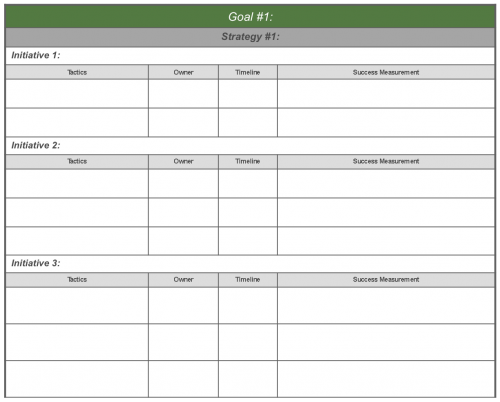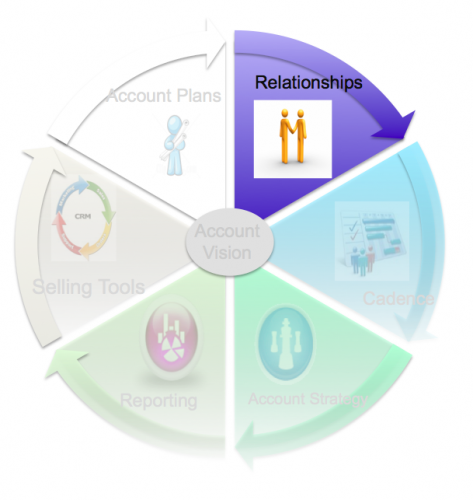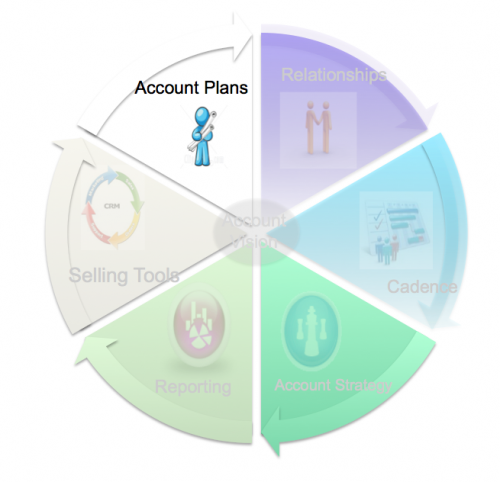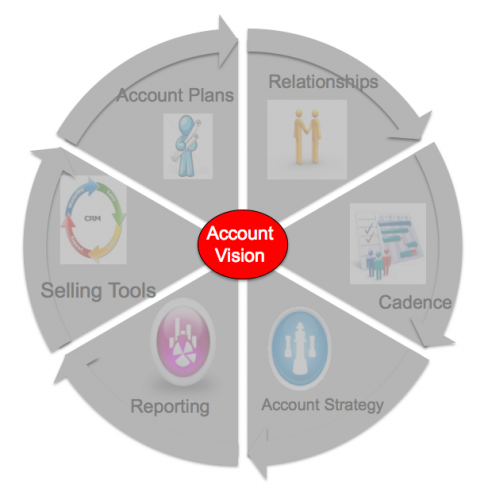What I like most about strategy in account management is, it’s like a window into how the goals are going to be accomplished. Earlier I talked about the account plan. In the account plan there is a goal section. The goals are the things to be accomplish with in the account. The strategies are the approach to making those goals a reality.
One of the best selling skills a sales person can have is the ability to develop a sales strategy. The best strategies take into consideration the unique elements of the account. This is where the analysis phase of the account plan becomes so important. By focusing on exactly what is going on in the account, where the account is going, who the key influencers are, what the market is doing, what is happening with the competition, etc. the strategy will be successful.
I’ve found, based on the account assessment, there is almost always more than one strategy. Most good account governance plans have multiple strategies for each of their goals. Another way to look at it is if you have 4 goals, you would probably have at least 8 strategies, 2 for each goal. In some cases you may have 3 strategies for each goal. This is the template I’ve used with my teams, again feel free to use it. This would be one strategy for one goal. You would use an additional one for a different strategy for the same goal.

Strategies are absolutely critical to success. To create good ones, a strong, robust, thorough assessment has to have been done. Strategies rely solely on information. Strategies are only as good as the information that made them. A good account strategy needs a good account assessment.
Account assessment is the greatest weakness in sales. Sales people aren’t known for assessing environments up front. They are excellent at reacting. Unfortunately, reacting is what creates pricing wars, and RFP responses. Reacting does little to allow sales to “manage” an account. This being said, the assessment section of the account plan is absolutely critical to creating good account strategies.
To be successful, strategies need execution. To execute on a strategy the initiatives and tactics that will be deployed need to be called out. For instance, if a goal is to increase revenue by 10%, a strategy may be to sell a new product to the account. To sell that product a set of initiatives must be determined. An initiative could be to demonstrate value of XYZ product to accelerate the customers stated goal of increasing customer satisfaction. Notice this initiative gives life and purpose to the strategy of introducing a new product to increase revenue. Once all the initiatives have been identified, the details need to be ironed out. These details are the specific tactics required to ensure the initiatives happen. Using the example above, a tactic could be to work with product marketing to establish the specific impact XYZ product can have on the accounts customer satisfaction goals. It could be meet with account VP to determine how they measure customer satisfaction etc. The tactics are very specific steps that will be taken to drive the initiatives, that support the strategies, that get you to your goals.
Account strategies are more than a high-level approach that sits on a bookshelf somewhere. Good account strategies are born out of the account plan. They leverage the well researched account and organizational assessment. They have specific initiatives and tactics to ensure they are achieved.
Successful account governance wins or loses on the ability to execute against an account strategy. Keep them linked, be specific and attach them to the Approach section of the account plan and they will be achieved.







